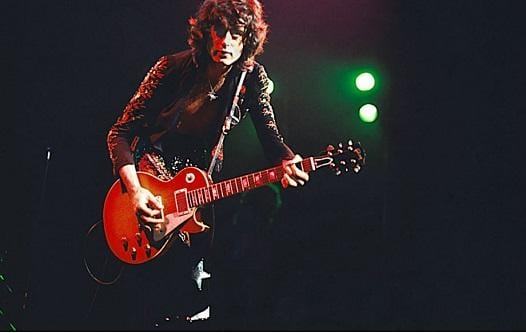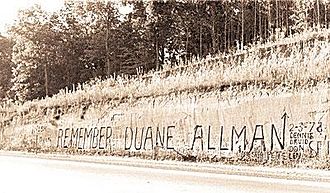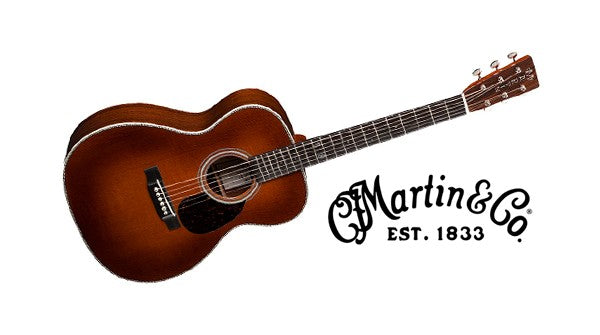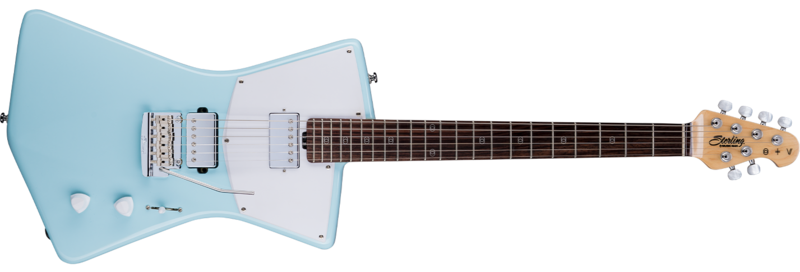Your Cart is Empty
Four Songs That Illustrate the Creative Use of Alternate Guitar Tunings
August 02, 2019 5 min read

Always looking for ways to make their songs sound fresh and new, guitarist/songwriters have been experimenting with tunings for decades, looking for unique and startling new sounds to breathe new life into their music.
Folk legend Joni Mitchell once said, “If you think you’ve figured out my chords but the fingerings are hard, then you have the wrong tuning.”
Most beginners and even some intermediate players tend to forget that the E, A, D, G, B, and E tones of standard tuning are not set in stone. Why would we spend years mastering chord fingerings and scale shapes in standard tuning only to throw out everything and start all over with strange new tunings? There are several good reasons for this.
First, altered tunings allow you to unleash brand new chord shapes that employ open strings that usually sound wide open and resonant. Lower bass notes and discordant intervals give new depth and texture to chords, making the music more complex and able to carry new emotional content.
Second, these open sounding voicings employ simple fingerings that can be moved all around the fingerboard, allowing the use of pedal tones and sophisticated rhythms that make the music less predictable.
Most important of all, alternate tunings change the entire atmosphere of the song, opening up entirely new sonic territory for the music and lyrics to inhabit. Musicians, like The Rolling Stones, Led Zeppelin, Radiohead and Phoebe Bridgers are always looking to express themselves in new ways, and all of them have found alternate tunings to be solid ground for their sonic experimentation.
The Rolling Stones - “Brown Sugar” Open G Tuning (D-G-D-G-B-D)
Keith Richards discovered the wonders of the “Open G” tuning after hearing blues-great Ry Cooder perform for the first time in 1969. In the tune “Brown Sugar,” released less than two years later, the legendary guitarist and songwriter puts this classic open G tuning to great use, finding a variety of interesting chord voicings in the open G tuning.
To get your guitar to sound like the recording, you may want to remove the 6th (lowest) string when playing in the open G tuning. This gives you only five strings, but it puts open G in the bass. Of course, this is not necessary if you want to play along with the Stones in “Brown Sugar” or any other song using an open G tuning pattern.
Brown Sugar by The Rolling Stones

Brown Sugar, Live in 1971
Led Zeppelin - “Kashmir” DAD GAD Tuning
How many of us have tried to figure out Led Zeppelin’s classic Kashmir with a low E pedal tone and a variety of not-quite-right-sounding double stops on a variety of strings without success? To figure this out by ear you would had to have stumbled on what would become a very popular alternate tuning: DADGAD.
In Kashmir, Jimmy Page of Led Zeppelin explores the exotic possibilities of the popular DADGAD tuning with a variety of simple two-note shapes on the 5th and 3rd strings that create a variety of sonic colors against the low open D pedal tone. Kashmir spawned a generation of experimentation with alternate tunings and explorations of middle eastern and Asian tonalities, resulting in an army of imitators, few of which have created music quite as memorable as “Kashmir”.
Kashmir by Led Zeppelin (Opening riff)

Kashmir Live
Radiohead - “Optimistic” Double Drop D Tuning
Optimistic is one of the only guitar driven tracks on Radiohead’s iconic ‘Kid A’ album, famous for its forays into digital experimentation which were completely mind-blowing when first released in 2000. Optimistic employs a double drop-D tuning, with the low and high E strings tuned down to D notes (D - A - D - G - B - D) for the rhythm parts played by Thom Yorke and Ed O’Brien, and a unique tuning employed by Jonny Greenwood with the B string tuned up to C for the arpeggiated lines (D - A - D - G - C - D we think... if you look in the video, he drags his pick across several open strings). In the example below, we’ll look at the main verse section and the arpeggio played over it.
Like Zeppelin’s Kashmir, the drop-D tuning allows Radiohead to employ a variety of chord voicings as simple two note shapes with the open low D as a pedal tone. The open strings allow the chords to resonate in ways they otherwise wouldn’t had they used bar chords instead.
Optimistic (Verse), by Radiohead
Video Performance: From the Basement
Jonny Greenwood's arpeggio part (as close as we can get...)

Phoebe Bridgers - “Motion Sickness” Open C# Major Tuning
In aGuitar.com interview, Bridgers says of playing and composing, “I’m still getting comfortable with it… At first it was just a vehicle for writing songs. I knew about nine chords, probably, for the first five years of playing!
"I have this really horrible habit of writing the same song 15 times – like if I discover a new tuning or a new chord, I’ll write a song and then realise it’s the exact same format as the past 10 I was writing! So I’m still finding my style, but I love – love – open-tuned baritone guitar. It’s perfect for how I write – it makes everything sound so sad! But it takes it out of the singer-songwriter world.”
In the live Tiny Desk version of her song “Motion Sickness,” Bridgers plays a Danelectro Baritone Guitar tuned to open A major, with a capo at the 4th fret which makes it the equivalent to playing a regular guitar tuned to C# Major or C#G#C#FG#C# without a capo (chords transcribed below). In her unorthodox tunings and the deep tone of her Danelectro Baritone guitar, Bridgers finds the perfect vehicle for her emotionally complex songwriting style.
Before discovering her baritone guitar, she had been tuning a regular guitar down to C# which didn’t work. With the baritone guitar she was able to tune to A and use a capo to get to C#, with the depth and resonance she had been looking for all along.
In the tab below, we have the chords and the tuning for the live Tiny Deck performance version of “Motion Sickness,” one of Bridgers best tracks. The time is not accurate, but once you get a feel for the changes, you can follow along pretty well.
Chords for Phoebe Bridgers - “Motion Sickness”

Tiny Desk Performance - Motion Sickness
This is nowhere near an exhaustive list of great songs that feature alternate tunings, but just a few of our favorites. There are so many, in fact, that we will probably revisit this topic in the future. In the comments below, please share some of your favorite songs that feature alternate tunings!
Leave a comment
Comments will be approved before showing up.
Also in Adirondack Guitar News and Blog
Browse Our Store
Recent Articles
- Left Handed Guitarists Who Learned to Play Right Handed July 13, 2021
- The History and Importance of the Martin 28 Style July 13, 2021
- Adirondack Guitar Profiles: St. Vincent July 13, 2021
- Adirondack Guitar Profiles: John Petrucci May 05, 2021
- How to Turn Your Music Skills into a Career March 30, 2021




